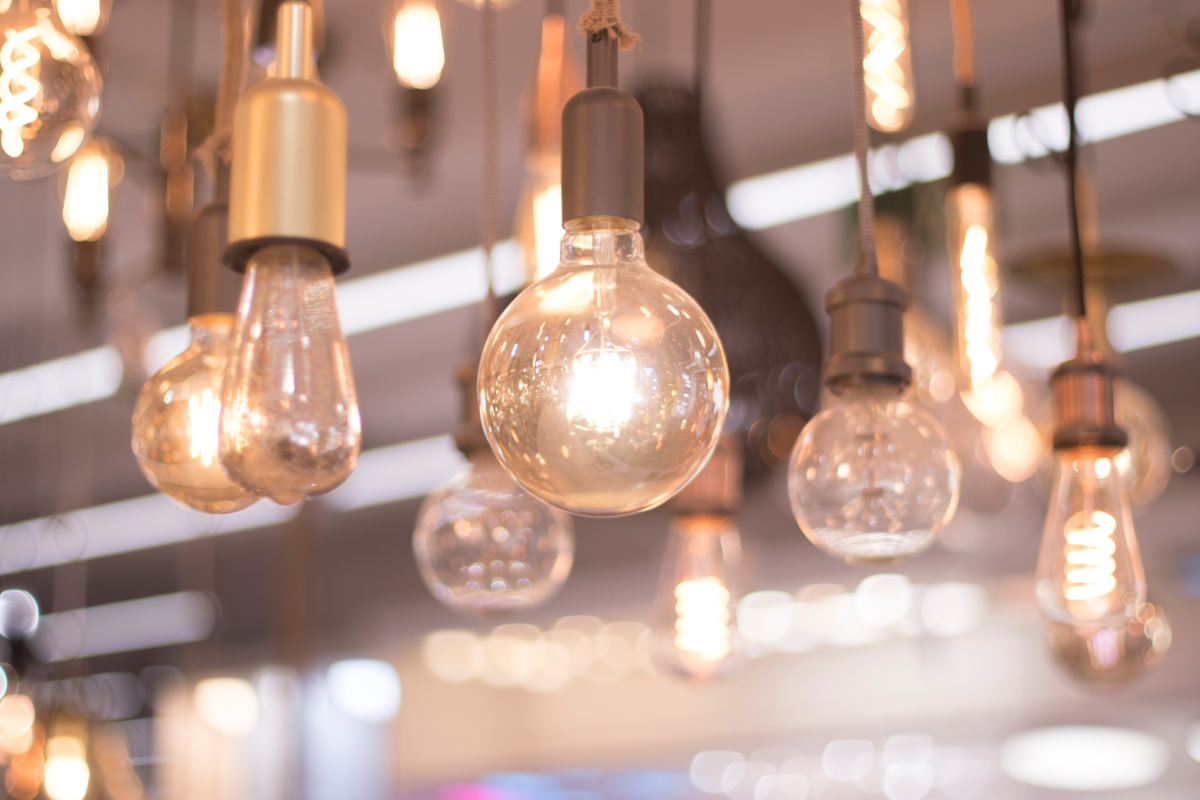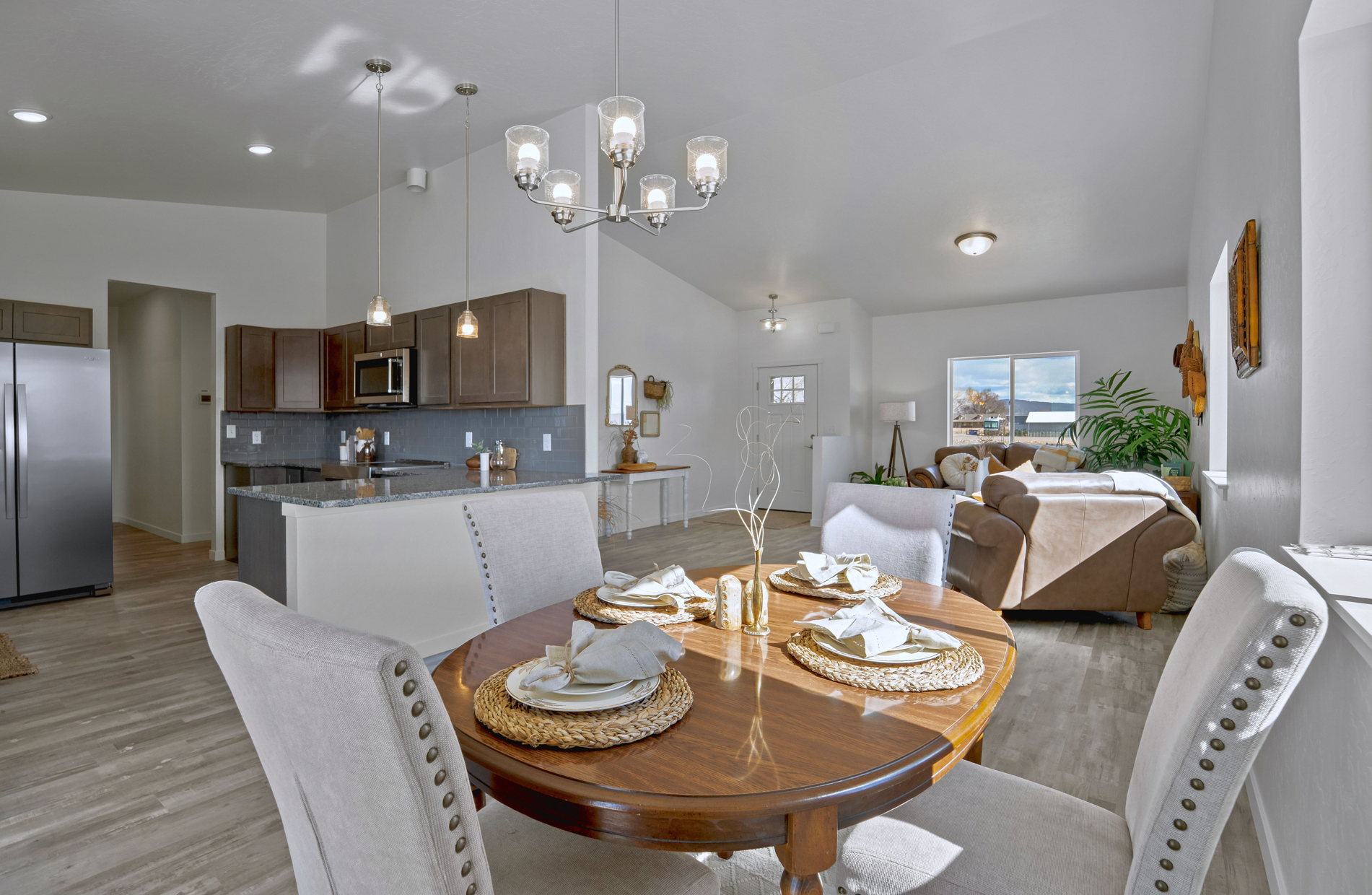LED Lighting: What makes it Important?

LED lighting has revolutionized the way we illuminate our homes, businesses, and cities. With their energy efficiency, long lifespan, and versatility, LED lights have become increasingly favored over alternatives like fluorescent lights or incandescent lights.
At Senergy Builders, we take pride in harnessing the power of LEDs to illuminate our constructed homes. We are loyal to the mission to promote energy efficiency in Grand Junction, through our methods and craft. At the same time, by benefiting from the LED lights we provide, our homeowners get the benefit of saving money.
We are passionate about adhering to
ENERGYSTAR standards, and this is prevalent in our dedication to the complete domination of ENERGYSTAR approved LED lights in our constructed houses. We even have subdivisions that speak for themselves, such as Brookfield South and River Trail. 100% of lighting used in Senergy Builder homes is LED Technology.
What makes LED lighting so important to maximizing energy efficiency efforts?
Energy Efficiency
One of the most significant advantages of LED lighting is its energy efficiency. LEDs consume significantly less energy than traditional incandescent and fluorescent lights, making them the ideal environmentally friendly choice.
LED bulbs use up to 80-90% less energy than incandescent bulbs, which translates to lower electricity bills and reduced energy consumption in the long scheme. In terms of saving on money, a single bulb contributes to saving about $55 over its lifetime. This energy efficiency also contributes to mitigating climate change by reducing greenhouse gas emissions associated with electricity generation.
Long Lifespan
LED lights have an exceptionally long lifespan compared to traditional lighting technologies. While incandescent bulbs typically last around 1,000 hours and fluorescent bulbs around 8,000 hours, LED bulbs can last up to 25,000 hours or more.
This longevity reduces the frequency of bulb replacements, saving both time and money in the long run. Additionally, fewer discarded bulbs result in less waste, contributing to sustainability and resource conservation.
Durability and Reliability
LED lights are highly durable and resistant to shock, vibration, and temperature fluctuations. Unlike fragile incandescent and fluorescent bulbs, which can easily break or shatter, LED bulbs are solid-state devices that can withstand rough handling and adverse conditions. This durability makes LED lighting particularly suitable for outdoor and industrial applications where robustness is essential.
Instantaneous Lighting
LED lights provide instant illumination without the need for warm-up time, unlike some fluorescent and HID (high-intensity discharge) lights. This instantaneous lighting is especially beneficial in environments where quick and reliable illumination is critical, such as emergency situations, security lighting, and automotive headlights.
Design Flexibility
LED lighting offers unparalleled design flexibility, allowing for innovative and creative lighting solutions. LEDs come in a variety of shapes, sizes, colors, and color temperatures, making them suitable for diverse applications, from architectural lighting and accent lighting to decorative lighting and stage lighting.
Additionally, LED technology enables precise control over light intensity and direction, facilitating customizable lighting designs tailored to specific needs and preferences.
Color Rendering and Temperature Control
LEDs offer superior color rendering compared to traditional lighting sources, allowing for accurate representation of colors and improved visual clarity. LED bulbs are available in a wide range of color temperatures, from warm white to cool white, allowing users to create different moods and ambiance according to their preferences.
This versatility is particularly beneficial in residential, commercial, and hospitality settings, where lighting plays a crucial role in enhancing aesthetics and atmosphere.
Safety and Environmental Benefits
LED lighting is inherently safer and more environmentally friendly than traditional lighting technologies. LEDs do not contain hazardous materials such as mercury, which is present in fluorescent and HID lamps, making them safer to handle and dispose of at the end of their life cycle.
Additionally, LED lights emit significantly less heat than incandescent bulbs, reducing the risk of burnt fingers and combustion, especially in confined spaces and sensitive environments.
Smart Lighting Integration
LED technology seamlessly integrates with smart lighting systems, enabling remote control, automation, and connectivity via smartphones, tablets, and voice-activated assistants. Smart LED bulbs can be programmed to adjust brightness, color, and scheduling according to user preferences, enhancing convenience, energy efficiency, and security.
This connectivity also facilitates the implementation of advanced lighting features such as motion sensing, occupancy detection, and daylight harvesting, further optimizing energy savings and user comfort.
Health and Well-being
LED lighting has been shown to have positive effects on human health and well-being. Unlike traditional lighting sources, which can emit flicker and glare, LEDs produce steady, uniform light that is easier on the eyes and reduces eye strain and fatigue.
Moreover, LED bulbs can be tuned to emit specific wavelengths of light, such as blue-enriched white light, which has been shown to improve alertness, mood, and cognitive performance, particularly in indoor environments with limited natural light exposure.
Global Impact
The widespread adoption of LED lighting has significant implications for global energy consumption, carbon emissions, and sustainable development. As countries transition to LED lighting on a large scale, they can achieve substantial energy savings and reduce their dependence on fossil fuels, thus contributing to combating climate change.

LED lighting represents a transformative advancement in lighting technology, offering numerous benefits in terms of energy efficiency, longevity, versatility, and sustainability.
It is estimated that, if every American home replaced just one light bulb with one LED bulb that has earned the ENERGY STAR, we would save about $580 million in energy costs and prevent 7 billion pounds of greenhouse gas emissions per year, equivalent to those from about 690,000 cars.
Choose Senergy Builders
Senergy Builders was founded on a robust team of seasoned and well-experienced construction professionals, boasting over 200 years of collective experience across the industry.
Specializing in value-packed, energy-efficient, and low-maintenance new homes, at Senergy Builders, we are committed to setting the standard for environmentally friendly and customer friendly excellence.
The company's name reflects its ethos, combining "Smart" and "Energy" to emphasize a commitment to efficiency and environmental responsibility. With a steadfast belief in the power of efficiency to reduce environmental impact, Senergy Builders is dedicated to pioneering sustainable practices in the construction sector.
To learn more about us, contact us at 970.248.8500.
You might also like



